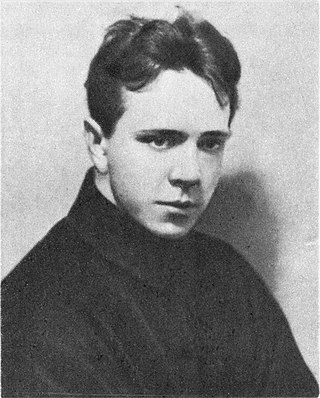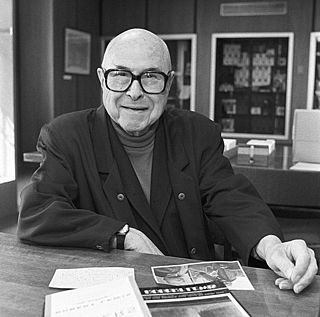
Acting is an activity in which a story is told by means of its enactment by an actor who adopts a character—in theatre, television, film, radio, or any other medium that makes use of the mimetic mode.

Method acting, known as The Method, is a range of rehearsal techniques, as formulated by a number of different theatre practitioners, that seeks to encourage sincere and expressive performances through identifying with, understanding, and experiencing a character's inner motivation and emotions. These techniques are built on Stanislavski's system, developed by the Russian actor and director Konstantin Stanislavski and captured in his books An Actor Prepares, Building a Character, and Creating a Role.

Dame Vanessa Redgrave is an English actress. Throughout her career spanning over six decades, Redgrave has garnered numerous accolades, including an Academy Award, a Tony Award and two Primetime Emmy Awards, making her one of the few performers to achieve the Triple Crown of Acting. She has also received various honorary awards, including the BAFTA Fellowship Award, the Golden Lion Honorary Award, and an induction into the American Theatre Hall of Fame.

Stanislavski's system is a systematic approach to training actors that the Russian theatre practitioner Konstantin Stanislavski developed in the first half of the twentieth century. His system cultivates what he calls the "art of experiencing". It mobilises the actor's conscious thought and will in order to activate other, less-controllable psychological processes—such as emotional experience and subconscious behaviour—sympathetically and indirectly. In rehearsal, the actor searches for inner motives to justify action and the definition of what the character seeks to achieve at any given moment.

Lee Strasberg was an American theatre director, actor and acting teacher. He co-founded, with theatre directors Harold Clurman and Cheryl Crawford, the Group Theatre in 1931, which was hailed as "America's first true theatrical collective". In 1951, he became director of the nonprofit Actors Studio in New York City, considered "the nation's most prestigious acting school," and, in 1966, was involved in the creation of Actors Studio West in Los Angeles.

Sanford Meisner was an American actor and acting teacher who developed an approach to acting instruction that is now known as the Meisner technique. While Meisner was exposed to method acting at the Group Theatre, his approach differed markedly in that he completely abandoned the use of affective memory, a distinct characteristic of method acting. Meisner maintained an emphasis on "the reality of doing", which was the foundation of his approach.

The Neighborhood Playhouse School of the Theatre is a full-time professional conservatory for actors in New York City. First operational from 1915 to 1927, the school re-opened in 1928 and has been active ever since. It is the birthplace of the Meisner technique of acting, named for American actor and acting teacher Sanford Meisner.

Stella Adler was an American actress and acting teacher.

Richard Boleslawski was a Polish theatre and film director, actor and teacher of acting.

Mikhail Aleksandrovich Chekhov, known as Michael Chekhov, was a Russian-American actor, director, author, and theatre practitioner. He was a nephew of the playwright Anton Chekhov and a student of Konstantin Stanislavski. Stanislavski referred to him as his most brilliant student.
The Meisner technique is an approach to acting developed by American theatre practitioner Sanford Meisner.

Robert Lewis was an American actor, director, teacher, author and founder of the influential Actors Studio in New York in 1947.
Twentieth-century theatre describes a period of great change within the theatrical culture of the 20th century, mainly in Europe and North America. There was a widespread challenge to long-established rules surrounding theatrical representation; resulting in the development of many new forms of theatre, including modernism, expressionism, impressionism, political theatre and other forms of Experimental theatre, as well as the continuing development of already established theatrical forms like naturalism and realism.
Penny Templeton is an American acting teacher based in New York City. Her primary focus is adapting the techniques of the great master teachers ,to make them accessible tools for use in today's under rehearsed, fast-paced world of acting.

An actor or actress is a person who portrays a character in a production. The actor performs "in the flesh" in the traditional medium of the theatre or in modern media such as film, radio, and television. The analogous Greek term is ὑποκριτής (hupokritḗs), literally "one who answers". The actor's interpretation of a role—the art of acting—pertains to the role played, whether based on a real person or fictional character. This can also be considered an "actor's role," which was called this due to scrolls being used in the theaters. Interpretation occurs even when the actor is "playing themselves", as in some forms of experimental performance art.
The Michael Howard Studios is an acting studio for the performing arts located in at 152 West 25th Street in Chelsea, Manhattan, New York City; the studio was founded in 1953 by actor/director Michael Howard.

Ion Cojar was a Romanian acting teacher, researcher, and theatre director. He is the founder of a unique method that revolutionised the Romanian school of acting.
Classical acting is a traditional type of acting centered around the external behavior of the performer. It may be contrasted with newer styles of acting, developed around the ideas of Konstantin Stanislavski, which place emphasis on an actor's psychological relationship with their part.
An acting coach or drama coach is a teacher who trains performers – typically film, television, theatre, and musical theatre actors – and gives them advice and mentoring to enable them to improve their acting and dramatic performances, prepare for auditions and prepare better for roles.












